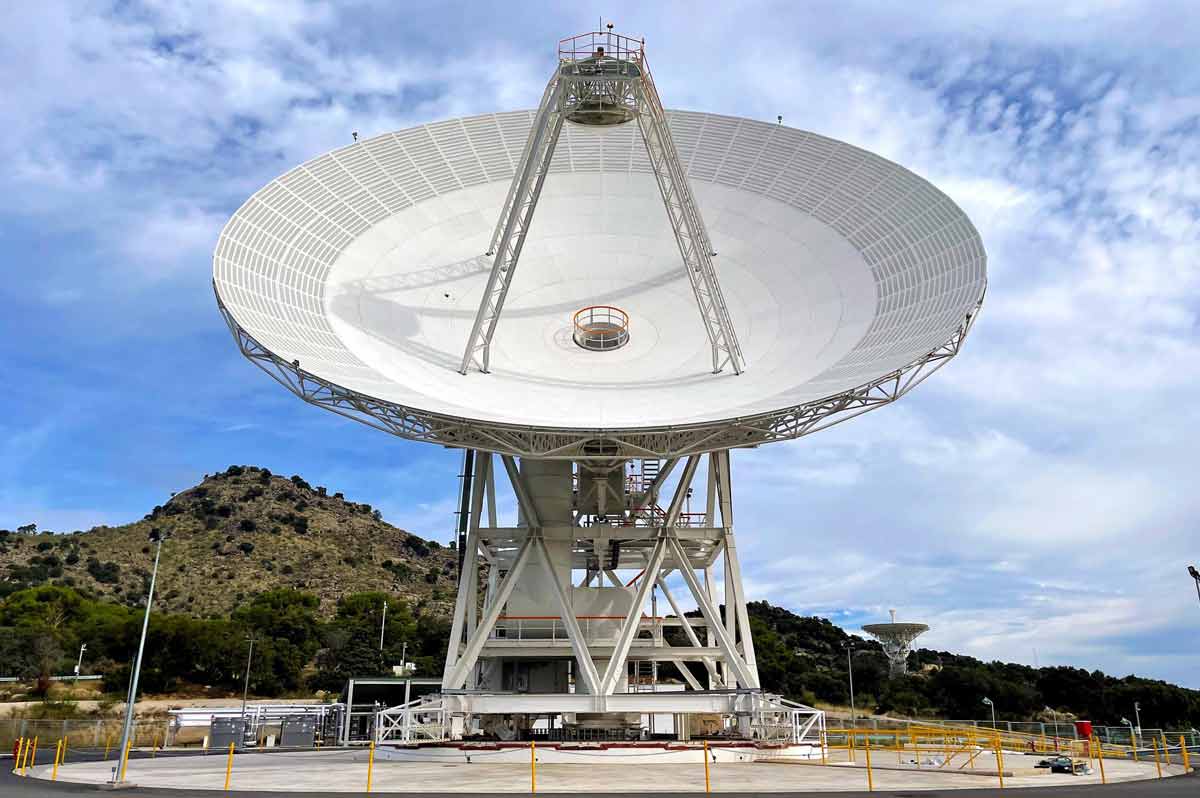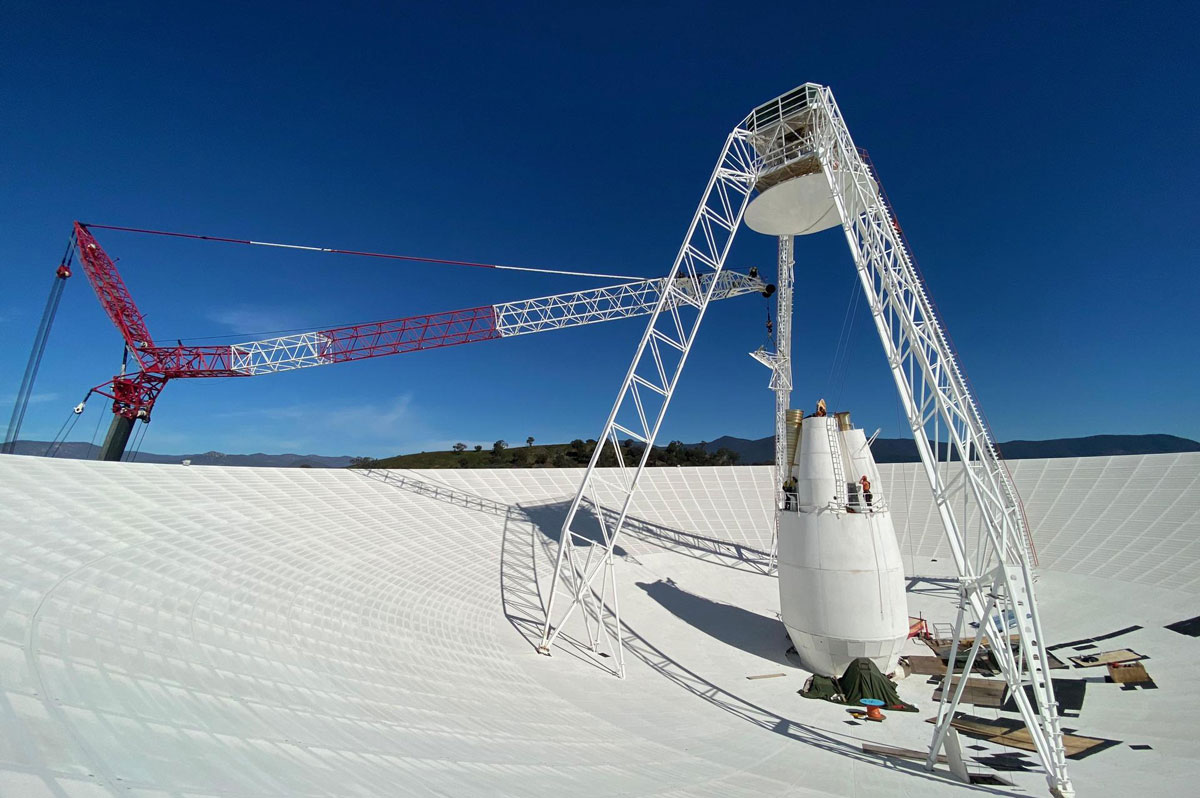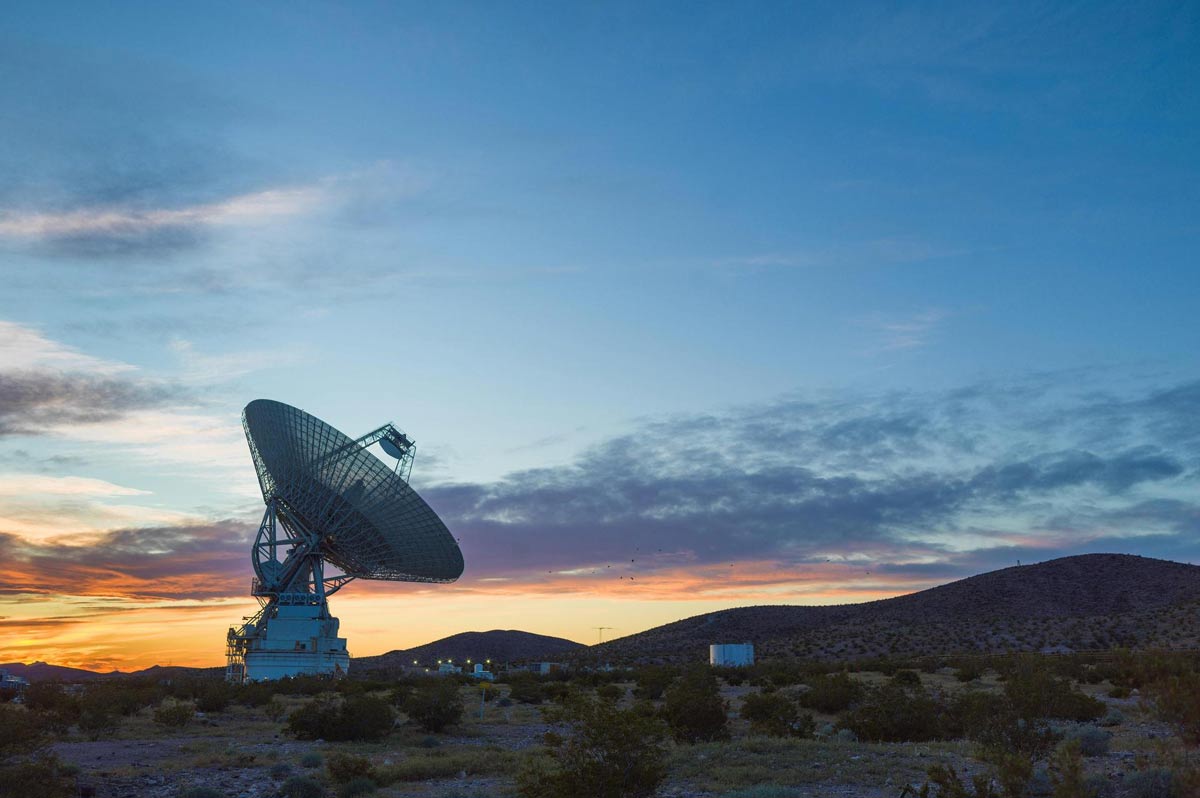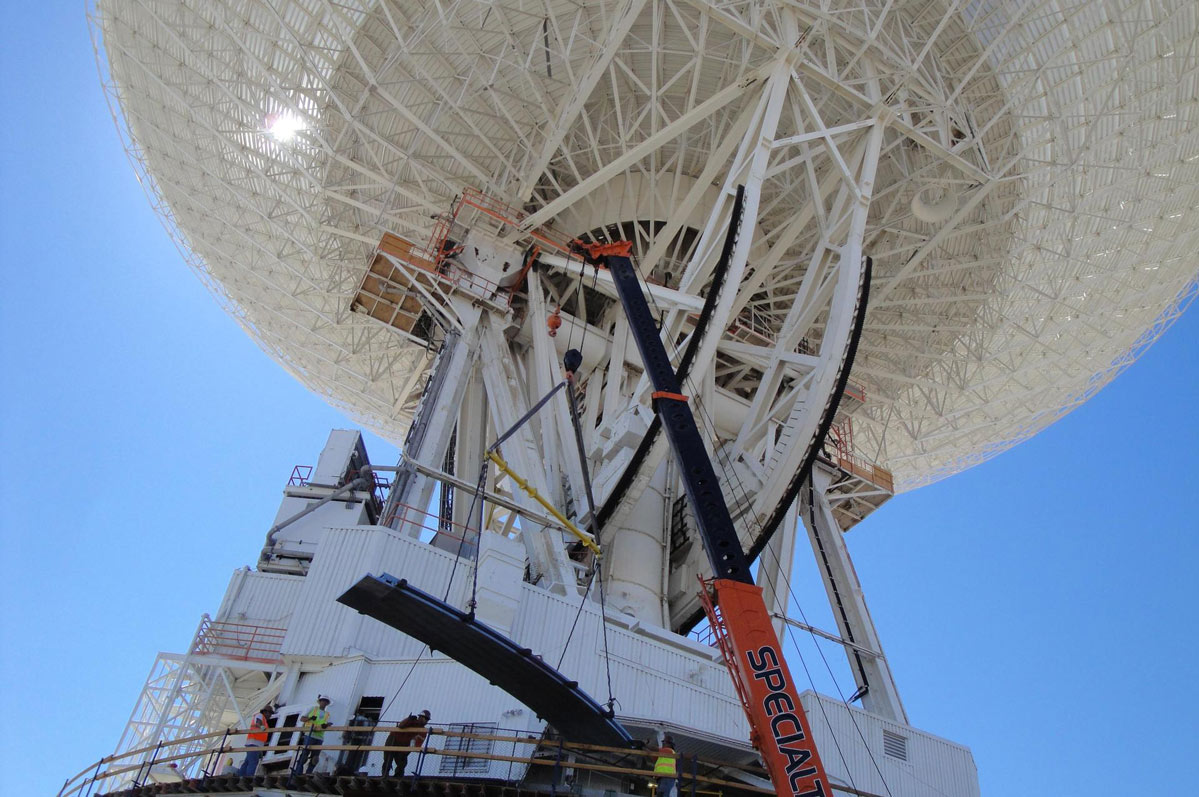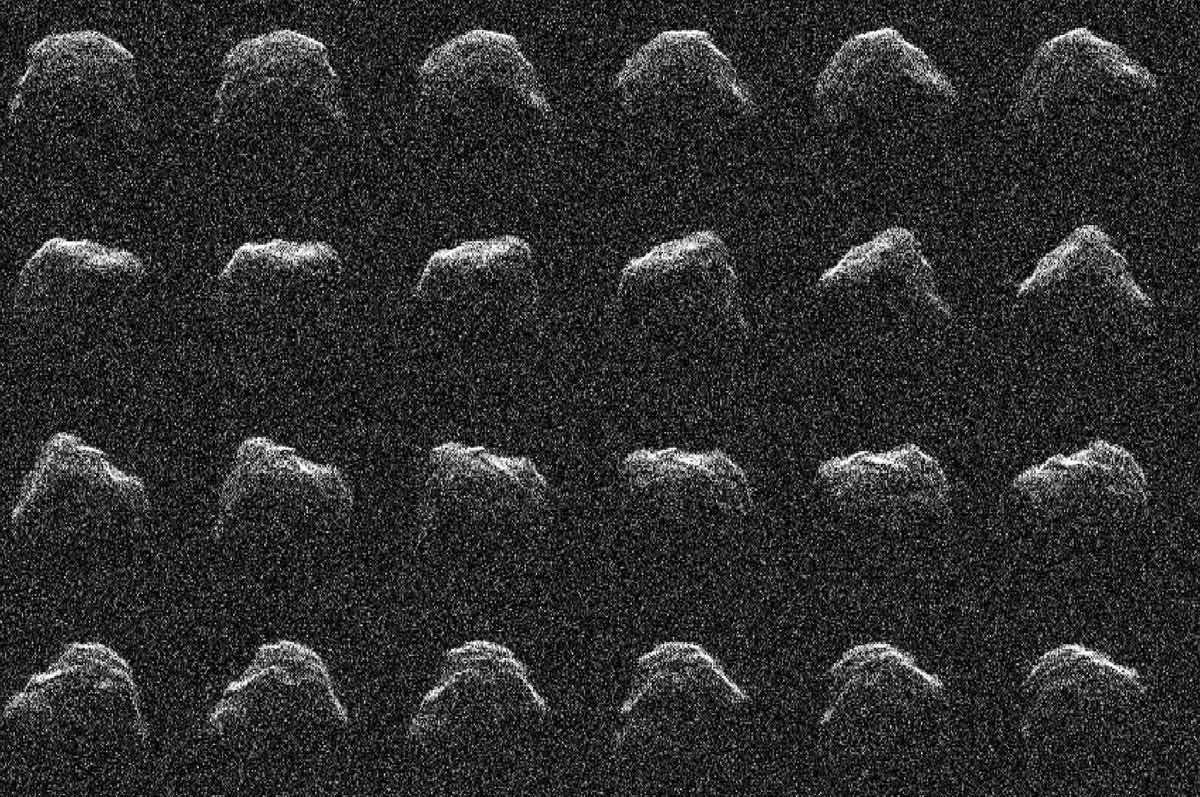To Infinity and Beyond
Regis alumnus Sonny Giroux helps NASA communicate in deep space
By Sara Knuth
When NASA sends humans back to the moon next year for the first time in 53 years, the agency will keep in touch with astronauts from the moment they leave Earth thanks to a system called the Deep Space Network — and Regis alumnus Sonny Giroux.

Regis alumnus Sonny Giroux manages the Deep Space Network for NASA subcontractor Peraton
Giroux, who earned his degree in business administration with a concentration in management in 2007, is the Deep Space Network program manager for NASA subcontractor Peraton. And although he’s firmly planted on Earth, his work travels among the stars and planets of the Milky Way Galaxy.
The Deep Space Network, a series of ultra-powerful radio antennas located in California, Spain and Australia, enables NASA and its Jet Propulsion Laboratory to communicate with spacecraft that travel to the moon, planets in our solar system and beyond. For Giroux, the network — also known as the DSN — has placed his career at the heart of some of NASA’s most innovative missions. While Giroux’s team doesn’t work on the spacecraft themselves, they enable them to communicate with Earth.
“We make it possible for the rovers and voyagers and all of the spacecraft — anything that is out there in space — to communicate with Earth,” Giroux said.
“Without the DSN, the missions would essentially just be unable to communicate, and we’d learn nothing about the Martian surface. We’d learn nothing about potential life … There are just so many discoveries that we’re learning about in our solar system and galaxy and our universe.”
When NASA’s Artemis II mission launches in September 2025, it will be far from the first time Giroux has helped the space agency communicate in deep space. During the course of more than 13 years as the DSN program manager with Peraton, Giroux has helped manage communications with missions including the Mars Perseverance rover, which is designed to search the planet for signs of ancient life. He also communicates with Voyager 1 and 2, twin spacecraft launched in 1977 to develop the “first in-depth reconnaissance of the outer planets” and are currently “charting the edge of interstellar space,” according to NASA.
Although Giroux has dedicated a large part of his career communicating into deep space, Artemis II will be the first time he contributes to a mission involving human spaceflight. The mission will send the first woman and first person of color to the moon’s surface. The prospect of protecting human lives means that Giroux and his team at Peraton have ramped up their preparations, following what they call a “follow the moon” schedule, which means that the Peraton DSN team works whenever the moon is in view, as well as their regular daylight hours. This means the team is working around the clock.
Listen to Sonny Giroux speak about the Deep Space Network on Peraton's podcast
“After all, human lives are going to be reliant on their ability to communicate with Earth, so we do a lot more planning and preparation,” Giroux said. “Execution is significantly greater for human space flight, and we transition our whole environment to support human space flight.”
Giroux said communications technology has advanced tremendously from the time astronauts Neil Armstrong, Buzz Aldrin and Michael Collins first went to the moon on Apollo 11. Since DSN communicates with both old and new technology, adaptability is essential.
“The thing about the DSN is that it has to be really versatile, because it’s still communicating with technologies from the ‘70s, with Voyager, and at the same time trying to make sure that we’re providing the state-of-the-art capabilities for something like Europa Clipper that just launched, or Artemis that’s about to launch,” Giroux said.
As experts work on each mission, they can expect vastly different communication speeds. Artemis will be able to communicate from the moon within minutes, while Voyager takes a full day — even at light speed — to communicate one way to Earth.
As high-tech as the technology sounds, Giroux said it’s relatively simple. “We’re not using anything different than, arguably, your cell phones or any other type of RF (radio frequency) communication capability that travels at the speed of light,” he said.
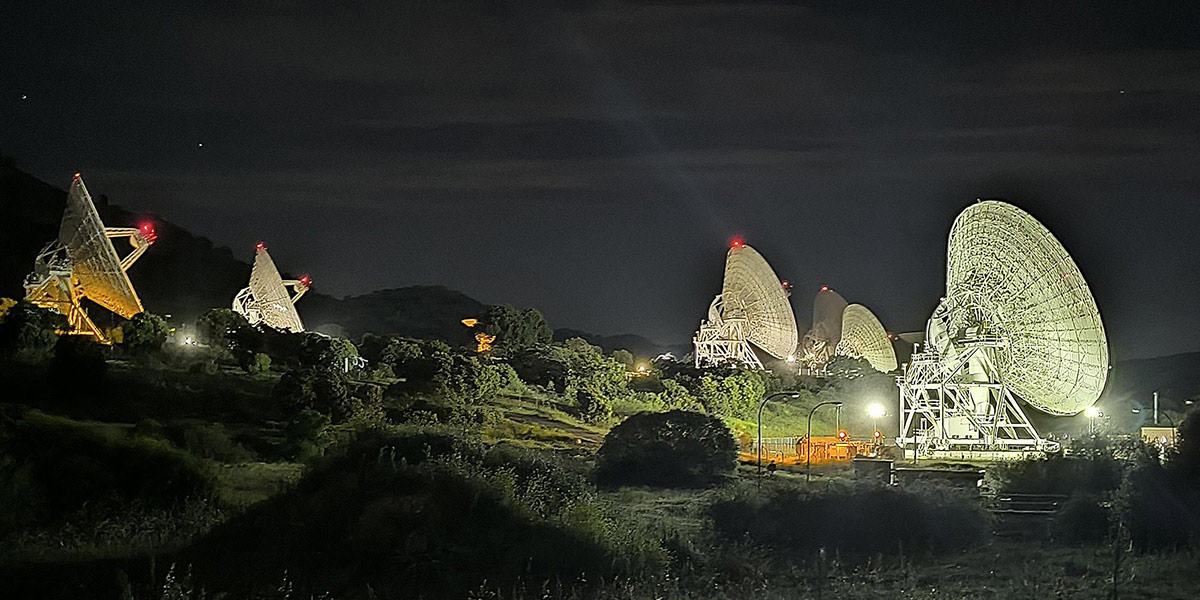
Sonny Giroux, an alumnus of Anderson College of Business and Computing, said his education prepared him for his current role with the Deep Space Network.
Artemis II will represent a new era in Peraton’s partnership with the Jet Propulsion Laboratory, which is funded by NASA and managed by the California Institute of Technology. The national security company began working with NASA and the laboratory in 2004 after providing support to the Air Force Satellite Control Network.
For Giroux, the mission is a career highlight. As a kid, he dreamed of becoming an astronaut. His career instead took him to the Air Force and then into the communications field. As he progressed in his field, he learned that a bachelor’s degree in business administration would help him move further as a manager. That’s where Regis came in. He soon enrolled in business courses in the college known today as Anderson College of Business and Computing.
“I knew that getting a degree was going to be necessary, certainly critical, if I was going to continue my path as a manager and progress in that area,” Giroux said, adding that a friend suggested that he consider Regis.
“I found that the Jesuit basis and values appealed to me. I liked the Godly basis of the school … it really fit perfectly for me while working full time at the time.”
As an adult, he couldn’t have imagined that he would begin working with NASA.
“When I joined the Air Force, I had a number of different opportunities for different career paths, and I ended up in the communications field, and I’ve been there ever since,” he said.
Like any job, even working on behalf of the Deep Space Network can start to feel routine. But Giroux said he always remembers what’s at the core of each mission.
“These kinds of activities really remind us just how special this job is, and how privileged we are to be able to do it for NASA and JPL,” he said.
What is the Deep Space Network?
The Deep Space Network — also commonly called the DSN — is a series of antennas that make up the most sensitive and powerful telecommunications system in the world, according to NASA. The enormous radio antennas are located 120 degrees apart in longitude in remote locations around Earth. They’re located at Goldstone, which is near Barstow, California, near Madrid, Spain, and near Canberra, Australia. The technology allows scientists to communicate with spacecraft that travel to the moon and beyond.

Article by Sara Knuth
About the AuthorMore from this issue
Share Your Thoughts
Email us or write in to the Regis University Magazine at 3333 Regis Blvd, L-27, Denver 80221

